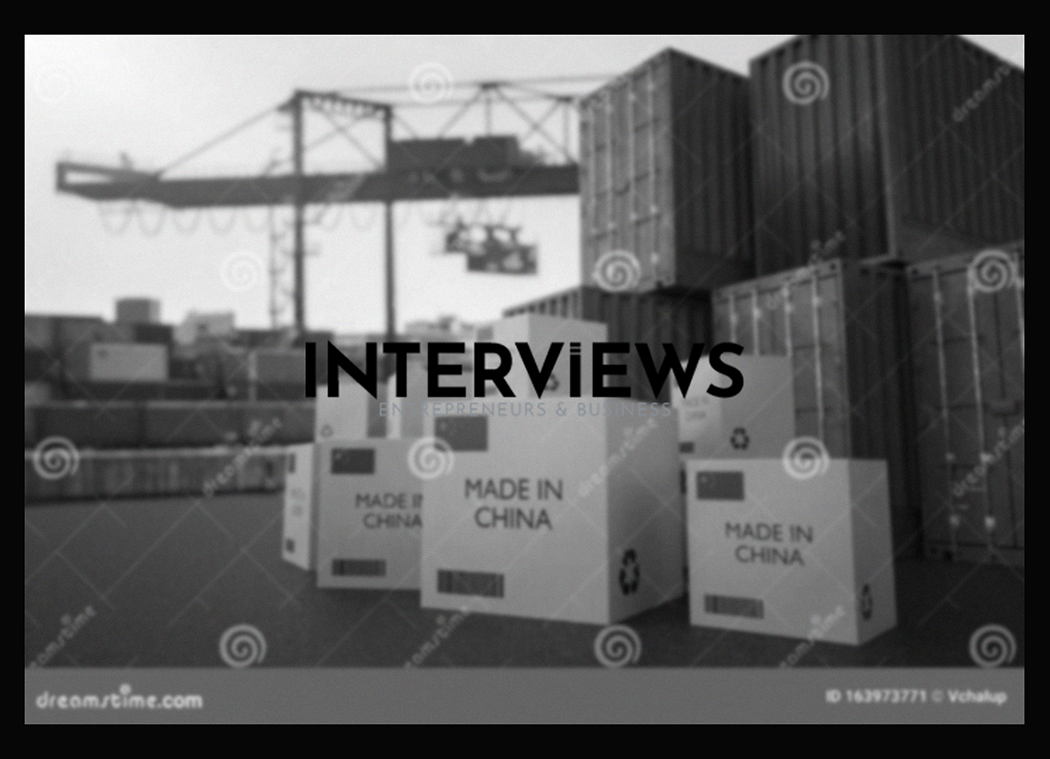Thinking of Importing in Bulk from China? Buckle Up, Buttercup!
Dreaming of importing goods from China? This land of dragons and dumplings offers low costs and big profits. But wait! Before you jump in, let’s look at the details of buying in bulk and shipping to the US. It’s tricky. It’s not always a simple point, click, and profit.
Where to Find Your Chinese Goldmine (aka, B2B Platforms)
You need a source first. Skip physical markets in Guangzhou. Use the internet. Alibaba.com acts like Amazon for wholesale. It connects you with countless suppliers ready for business. Need 5,000 rubber ducks? Alibaba’s your friend. Want a million fidget spinners? Dive in!
But don’t rely only on Alibaba. Platforms like DHgate and AliExpress are good too. They work well for smaller orders with lower Minimum Order Quantities (MOQs). Check Made-in-China.com, Global Sources, and HKTDC. They help too.
Licenses, Permits, and Red Tape: Navigating the Legal Jungle
Now, let’s tackle the boring but important part: paperwork. Good news! You don’t need a general import license to bring goods into the US from China. But there’s a catch.
If you import food, health products, or regulated items, you might need specific certifications or licenses. The FDA and other agencies may require proof that your goods are safe. Ignoring this leads to trouble.
You will still need to file an import declaration. This tells customs you are importing goods and who you are. It’s a formal introduction to import regulations.
You will also need an Import-Export Code (IEC). It is essential for compliance. Skip this step at your own risk.
Show Me the Money (and the Duties): Understanding Import Costs
Let’s discuss costs. Importing isn’t just about the goods’ price. There are additional charges you must know.
First up: customs duties. Good news! Shipments valued under $800 can be duty-free. But be cautious.
As of February 4, 2025, that carefree de minimis rule might change for goods from China and Hong Kong. An extra 10% tariff could apply to everything, regardless of value. Don’t be caught off guard.
Don’t forget shipping costs. These depend on various factors:
- Origin and destination: Ports matter.
- Shipping company: Compare prices from carriers.
- Season and demand: Prices rise during peak times.
- Container size: Bigger containers cost more.
- Fuel surcharges: Gas prices affect shipping costs.
- Tariffs and taxes: Include these in your calculations.
Shipping Shenanigans: Sea, Air, or Snail Mail?
How do you get goods from China to your door? Here are some main shipping options.
Sea Freight: The Slow and Steady (and Cheap) Tortoise
If you ship large volumes or heavy items, sea freight is usually cheaper. It’s slower than air freight but much more affordable. Think of it as the budget option. You may arrive late, but it’s kinder to your wallet.
You can choose between LCL (Less than Container Load) or FCL (Full Container Load). LCL shares containers with others to save money. FCL is for large shipments when you need your own container.
Air Freight: Speedy Gonzales (but Pricey)
If speed matters, air freight is for you. It’s fast, taking about 3-7 days. But it costs much more than sea freight. Use it when timing is critical or for small high-value items.
Postal Services: For Tiny Treasures
For small packages, try postal services like China Post ePacket. It’s good for samples or documents before you order in bulk.
Container Cost Rundown (Just to Give You Nightmares)
Want some rough figures? Shipping a 40-foot container from China to the US West Coast? Expect costs from $3,000 to $5,000. To the East Coast? You’ll see fees ranging from $4,000 to $6,500. Actual costs vary due to different factors.
Shipping Snafus: Why is My Stuff Taking Forever?!
Shipping often faces issues. Problems can disrupt your import timeline and budget.
Port Congestion: Traffic Jams on the High Seas
Port congestion causes many shipping delays. Too many ships and not enough capacity lead containers to sit in ports, causing headaches.
High Demand, Limited Space: Like Black Friday for Shipping
When shipping demand rises but space is limited, rates spike. It’s like booking a hotel during a major event; costs soar.
Saving Shipping Dollars: Become a Shipping Ninja
Let’s turn things around. Here’s how to save on shipping costs.
- Shop around for freight forwarders: Get multiple quotes. Don’t just choose the first one.
- Consolidate shipments: Bundle orders for better rates.
- Consider fulfillment centers: They speed up delivery and reduce costs.
- Plan ahead: Last-minute shipping is costly. Early planning saves money.
- Negotiate rates: Always ask for better prices.
- Do not be afraid to haggle. Freight forwarders may negotiate, especially if you’re a repeat customer or shipping large amounts.
- Explore Free Trade Agreements (FTAs): FTAs could provide duty exemptions. Think of them as secret discount codes for international trade.
Importing 101: The Process and the Papers
Let’s go through the basic import process. It is not hard, but knowing the steps prevents headaches.
- Know your import rights: Ensure you are legally able to import goods. (Generally, yes. It’s good to check).
- Identify your goods: What are you importing? Be clear. “Stuff” is not an acceptable customs declaration.
- Check if your goods are allowed: Are they legal to import to your country? Some items might be restricted or banned. Don’t import illegal stuff unless you like government facilities.
- Classify your goods and calculate landed cost: Identify tariff classification and all related costs (duties, shipping, etc.) to know your full cost.
- Find your supplier and place an order: Source products from China and make your bulk order.
- Arrange cargo transport: Select your shipping method and book your freight.
When your shipment arrives, you will need documents. Think of them as VIP passes for customs:
- Entry manifest (CBP Form 7533) or Application and Special Permit for Immediate Delivery (CBP Form 3461): Customs forms for your entry.
- Evidence of right to make entry: Proof that you are the rightful importer.
- Commercial invoice or proforma invoice: Transaction and goods value details.
- Packing lists: A detailed list of contents in each package.
- Import license or permit (if required): For special goods needing extra permission.
Important Tidbits to Tuck Away
Personal vs. Business Importing: A Key Distinction
Importing for personal use differs from importing for business. If it’s for yourself and not for resale, you likely don’t need licenses. However, if you’re selling those bulk unicorn slippers, you must follow business rules.
Vet Your Chinese Suppliers: Don’t Get Scammed!
Before sending money to an online supplier, conduct research. Verify your Chinese suppliers! Background checks, company registrations, factory visits (if possible), product samples, and checking references are vital. If it seems too good to be true, it might be. Trust your gut and due diligence.
Why Alibaba Prices are Often So Darn Low
Wondered how Alibaba provides such low prices? Here’s the secret:
- Direct Manufacturer Access: You buy directly from factories, eliminating middlemen markups. Think factory prices!
- Lower Production Costs in China: China has lower labor and electricity costs, translating to cheaper manufacturing.
- Bulk Purchase Power: Alibaba specializes in wholesale. Buying large quantities lowers the per-unit price.
- Competition: The number of suppliers on Alibaba creates fierce competition, lowering prices in the race for your business.
USPS and China Shipping: They’re Friends Again (Mostly)
Recall when USPS briefly suspended packages from China and Hong Kong due to tariff issues? Deliveries have resumed. The US Postal Service is back in the China shipping market. You can (usually) use USPS for smaller packages from China again.
Product Goldmines: What’s Hot to Import?
Want to import profitable items? Conduct market research! Identify what’s in demand and lucrative in your market. Popular categories include:
- Mobile Phone Accessories: Cases, chargers, and screen protectors are essentials. Huge market.
- Fashion/Clothing/Shoes/Bags: Always in vogue.
- Security Cameras: Growing security concerns drive high demand.
Bulk Buying: Is it Actually Cheaper? Spoiler: Yes.
Yes, buying in bulk is generally cheaper. Bulk products need less distribution effort, lowering manufacturer costs, and ultimately, what you pay. It’s basic economics.
The 25-Year Rule: Importing Vintage Wheels (for Car Nerds)
For car lovers: There is a 25-year import rule. Cars 25 years old or more can be imported into the US, even if they do not meet safety and emissions standards. This loophole allows entry for cool older foreign cars. Cars from 2000 and earlier are now eligible for import. Start your engines (and paperwork)!
Shipping Agents: Your Trade Sherpas
Navigating Chinese suppliers and international shipping can be complex. Language barriers, cultural differences, and distance increase challenges. Shipping agents (or freight forwarders) can guide you. They help manage complexities, minimize risks, and simplify the import process.
For express shipping, popular options include DHL, FedEx, and UPS. For sea freight, various freight forwarders can aid in finding the best routes and rates.
This is hopefully a less intimidating overview of importing in bulk from China to the USA. It’s a journey, not a sprint. Research thoroughly and be diligent. Maybe you will find import gold. Remember all costs, licenses, and headaches. Happy importing and may your containers arrive on time and intact!





